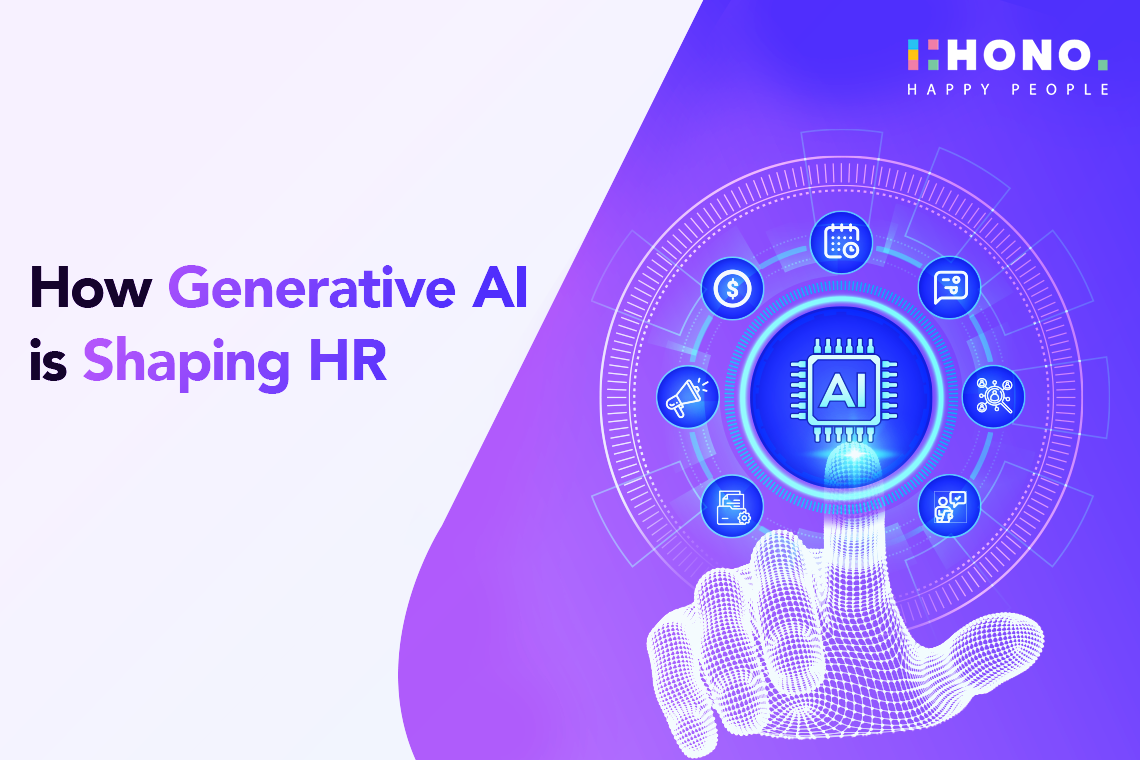Facilitating a diverse work culture based on efficient teamwork and collaboration has become increasingly essential for organizational success today. Studies show diverse and inclusive organizations work 12% harder. Business leaders recognize the significance of company cultures and values leveraging multi-generational and multi-cultural perspectives, experiences and skills, offering both challenges and opportunities. Companies are focusing on harnessing the collective intelligence of their teams, driving innovation and achieving sustainable growth in today's global marketplace.
Fostering Employee Collaboration in Multi-Generational and Multi-Cultural Workforce
9 mins

While diversity can lead to innovative solutions and enhanced creativity, it also presents communication barriers and potential conflicts. To promote employee collaboration for engagement across different demographics, organizations must embrace inclusivity, leverage technology, provide diversity training, foster mentorship programs and promote diversity with unique initiatives and policies. HONO’s innovative HR strategies provide simplified solutions to ace the DEI dynamics to establish a thriving work culture.
Did you know: A McKinsey Global Institute analysis says that by 2025, bridging the gender gap would enhance the value of the global economy by 26%.
Understanding the Importance of Employee Collaboration for Engagement
Effective employee collaboration is a clear sign of employees contributing to higher productivity and performance as they feel valued, engaged, and motivated, leading to higher job satisfaction and lower turnover rates. Collaborative environments encourage a sense of belonging, open communication, knowledge sharing, and teamwork, enabling employees to leverage their diverse skills and experiences to achieve common goals as well as adapt to a culture of continuous learning and growth.
Here’s how employee collaboration contributes to a positive company culture:
Enhanced Communication: Collaboration fosters open communication channels, promoting transparency, trust, and understanding among team members.
Team Unity: Collaborative efforts cultivate a sense of teamwork and support, where employees work together towards shared goals, fostering a culture of cooperation and unity.
Innovation Hub: Collaborative environments spark innovation and creativity by leveraging diverse perspectives and experiences, driving continuous improvement and propelling the organization forward.
Engagement Booster: Collaboration creates an engaging work environment where employees feel connected and valued, leading to higher levels of job satisfaction, productivity, and overall employee retention.
Embracing Diversity in the Workplace
Research shows companies with a highly engaged workforce are 21% more profitable. Strong D&I metrics within the work culture bring together individuals with different perspectives, backgrounds and experiences. By valuing and respecting each person's unique contributions, organizations can create an inclusive environment where diverse ideas are encouraged outside of their comfort zones, leading to innovation and success.
Take a look at the key benefits of having a multi-generational and multi-cultural workforce:
Diverse Perspectives: A multi-generational and multi-cultural workforce brings together a variety of perspectives, enriching problem-solving and decision-making processes.
Enhanced Creativity: Different cultural backgrounds and generational experiences spark creativity and innovation, leading to new ideas and solutions.
Broader Skillsets: Each generation and culture bring unique skills and strengths to the table, creating a well-rounded team capable of tackling diverse challenges.
Improved Customer Relations: With a workforce that reflects the diversity of their customer base, organizations can better understand and serve the needs of a global audience.
Stronger Employee Engagement: Inclusive environments foster a sense of belonging and value among employees, leading to higher levels of engagement, loyalty, and retention.
Chief strategies for creating an inclusive environment where all employees feel valued and heard:
Promote Diversity in Recruitment: Actively seek candidates from diverse backgrounds, including underrepresented groups using blind recruitment techniques to focus on qualifications rather than demographic factors.
Provide Diversity and Inclusion Training: Encourage open dialogue and offer regular training sessions to educate employees on the importance of diversity and inclusion, unconscious bias, and cultural competency.
Foster Inclusive Policies and Practices: Develop and enforce policies that promote equity and fairness in the workplace, such as flexible work arrangements, inclusive language guidelines, and transparent promotion processes. Create employee resource groups or affinity networks to provide support and representation for diverse communities within the organization.
Also read: The Role of Human Capital Management in Addressing Multigenerational Workforce Challenges
Building Bridges Across Generations and Cultures
To bridge generational gaps and cultural differences, organizations can foster open communication and mutual respect by promoting cross-generational and cross-cultural mentorship programs. HONO’s HR chatbot offers instant and personalized responses to diverse employee queries in multiple languages and also notifies about anniversaries and birthdays, thus allowing colleagues to come together and bridge generational and cultural gaps. Team-building activities and training sessions that celebrate diversity facilitates understanding and collaboration among employees of different backgrounds and ages.
Strategies for promoting understanding, empathy, and respect among team members:
Implement Diversity and Inclusion Training: Provide comprehensive training sessions to educate employees on the importance of diversity, equity, and inclusion (DEI) in the workplace. These sessions should focus on fostering empathy, understanding, and respect for individuals from different backgrounds.
Encourage Open Dialogue: Create a culture where team members feel comfortable discussing their perspectives, experiences, and concerns openly. Encourage active listening and constructive feedback to promote understanding and empathy among colleagues.
Foster Cross-Cultural Experiences: Organize events, workshops, or initiatives that allow team members to learn about different cultures, traditions, and perspectives. Encouraging participation in cross-cultural activities can help break down barriers and promote empathy and respect.
Lead by Example: Senior leaders and managers should exemplify inclusive behaviors and actively promote a culture of respect and understanding. By demonstrating inclusive leadership practices, they can set the tone for the entire organization and inspire employees to embrace diversity and empathy.
Establish Employee Resource Groups (ERGs): Create ERGs or affinity groups where employees with similar backgrounds or interests can come together to share experiences, support one another, and advocate for inclusivity within the organization. ERGs can play a crucial role in promoting understanding and empathy among team members while fostering a sense of belonging and community.
Following are some successful initiatives for promoting cross-generational and cross-cultural collaboration:
Cross-Generational Mentorship Programs: Implement mentorship programs that pair employees from different generations to facilitate knowledge sharing, skill development, and mutual understanding.
Cultural Awareness Workshops: Organize workshops or training sessions to increase cultural awareness and sensitivity among employees, helping them understand and appreciate the diverse perspectives and backgrounds within the organization.
Team-Building Activities: Host team-building events or activities that encourage collaboration and communication among employees from various generations and cultural backgrounds, fostering relationships and breaking down barriers.
Also read: Generative AI and Human Capital Management (HCM) for a Multigenerational Workforce
Leveraging Technology for Remote Collaboration
HONO ensures remote and hybrid work environments thrive effortlessly with innovative tech solutions for seamless collaboration among distributed teams, elevated by the HR chatbot for simplified HR communication 24/7 on the go. With the right tools and platforms, employees can communicate effectively, share documents in real time, and collaborate on projects regardless of their physical location.
Modern collaboration tools bridge geographical and cultural barriers among remote and hybrid employees. Video conferencing tools like Zoom and Microsoft Teams facilitate face-to-face communication, fostering a sense of connection despite physical distances. Project management software such as Asana and Trello enables teams to organize tasks, track progress, and collaborate on projects in real-time. Virtual collaboration spaces like Slack and Microsoft Teams provide channels for ongoing communication, file sharing, and idea exchange, promoting collaboration and teamwork regardless of employees' locations. These tools empower remote and hybrid teams to overcome geographical and cultural barriers, ensuring seamless collaboration and productivity.
Cultivating Company Culture and Values
Company culture and values are essential drivers in fostering collaboration among employees. A strong company culture that prioritizes teamwork, open communication, and mutual respect creates an environment where collaboration flourishes naturally. When employees share common values and beliefs, they are more likely to work together cohesively, leveraging each other's strengths and perspectives to achieve shared goals. Additionally, a culture that celebrates diversity and inclusion encourages individuals from different backgrounds to contribute their unique insights and ideas, enriching the collaborative process. Ultimately, company culture and values set the tone for how employees interact and collaborate, shaping the overall success and effectiveness of teamwork within the organization.
Strategies for aligning collaboration efforts with organizational values and goals:
Define Clear Objectives: Clearly communicate organizational values and goals, aligning collaboration efforts with these objectives to ensure that teamwork contributes to shared outcomes.
Promote Open Communication: Foster an environment of transparency and open dialogue, encouraging discussions on how collaboration aligns with organizational values and goals.
Lead by Example: Demonstrate desired behaviors through leadership, actively participating in collaborative efforts, and recognizing teamwork that reflects organizational values.
Provide Training and Support: Offer training programs to develop collaboration skills aligned with organizational values and provide ongoing support to empower teams to work together effectively.
Examples of companies with strong cultures of collaboration and their success stories:
Netflix’s Freedom & Responsibility Company Culture: The video streaming giant has a unified principle: Highly Aligned, Loosely Coupled. Employees have the freedom and authority to make decisions; managers offer context as needed but must not influence decision-making.
Southwest Airlines’ Fun & Loving Culture: Three crucial defining factors of Southwest Airlines’ company culture are appreciation, recognition, and celebration. Among the notable ones is “Culture Blitzes” in which a team visits an airport, touching every Southwest employee with food, fun, and support. The team even cleans the planes, allowing the crew to leave as soon as they land.
Airbnb: A Culture Where Anyone Belongs: The thumb rule is that nobody should hear about anything externally until they are first told internally. The perfect example of this is leadership meetings – employees get the notes of everything that was discussed just 24 hours after each executive meeting.
Fostering employee collaboration in multi-generational and multi-cultural workplaces is crucial for leveraging diverse perspectives, fostering innovation, and promoting mutual understanding. HONO commits to optimal employee collaboration and engagement with next-gen HR tech strategies to ace the evolving dynamics of workforce metrics and organizational success, leading to enhanced creativity, productivity and a more inclusive work environment.
Schedule a Demo Now
Frequently Asked Questions
HCM software automates and streamlines HR processes, making them more efficient and accurate. It provides a centralized platform for managing employee data, tracking performance, facilitating talent acquisition, and improving employee engagement. By leveraging HR management software, organizations can save time, reduce administrative burdens, make data-driven decisions, and enhance overall HR operations.
AI-driven HONO is considered the best HR software due to its innovative use of Artificial Intelligence (AI) to streamline and enhance HR processes. Here’s why. It provides actionable, data-driven insights that enable HR professionals to make informed decisions, improving overall organizational effectiveness and strategic planning. HONO automates repetitive and time-consuming HR tasks, allowing HR personnel to focus on more strategic activities, thereby increasing overall productivity and efficiency. HONO is scalable and adaptable, catering to the evolving needs of organizations, regardless of their size or industry.
Choosing the right Employee Management Software involves considering several factors to ensure it meets the organization’s needs. Here’s a guide to help you choose. Clearly define what you need the HRMS software to achieve, considering aspects like attendance tracking, performance management, and employee development. Determine a budget considering both the initial cost and ongoing expenses like subscription fees, updates, and support. Ensure the HCM software integrates seamlessly with other systems and tools used in your organization, such as payroll and attendance systems. Opt for cloud HCM with an intuitive and user-friendly interface to ensure ease of use for both HR personnel and employees. Assess the human capital management solution's security features and its ability to comply with relevant laws and regulations to protect sensitive employee data. By considering the above factors and conducting thorough research, you can select an Employee Management Software that aligns with your organizational goals and enhances overall workforce management.
.png?width=70&height=70&name=Team%20HONO%20logo-01%20(1).png)
Team HONO








.jpg)
